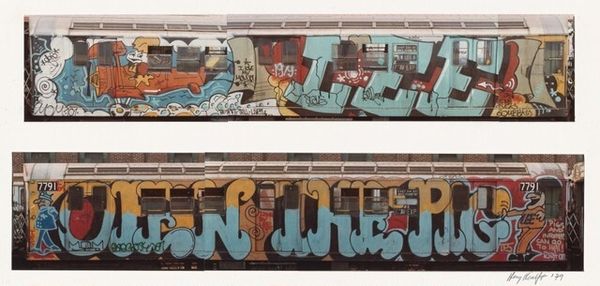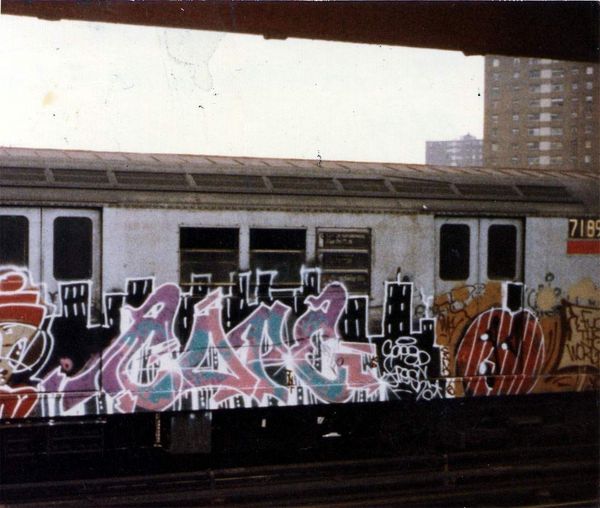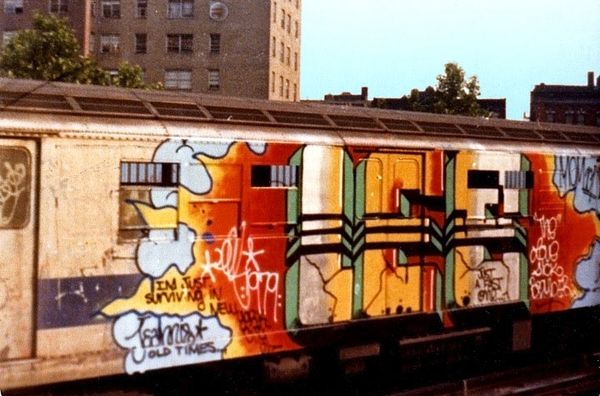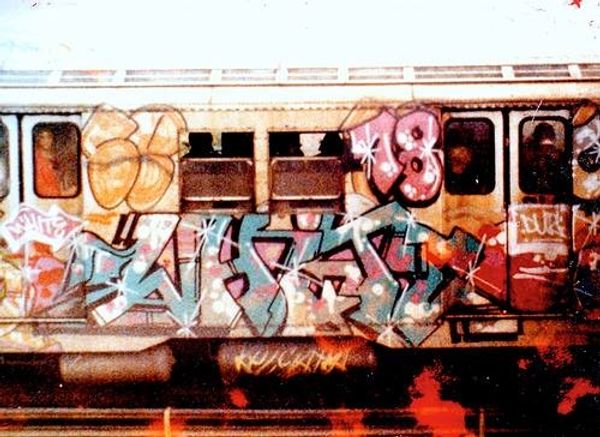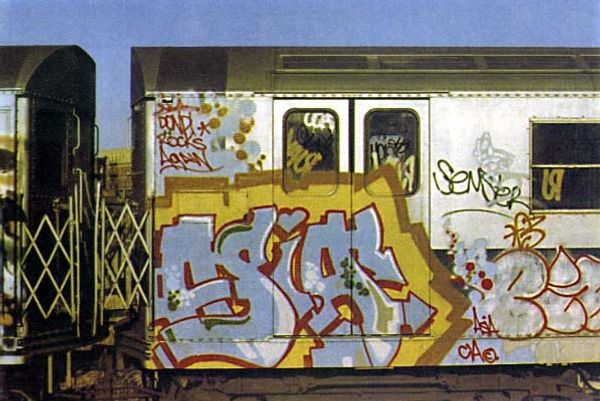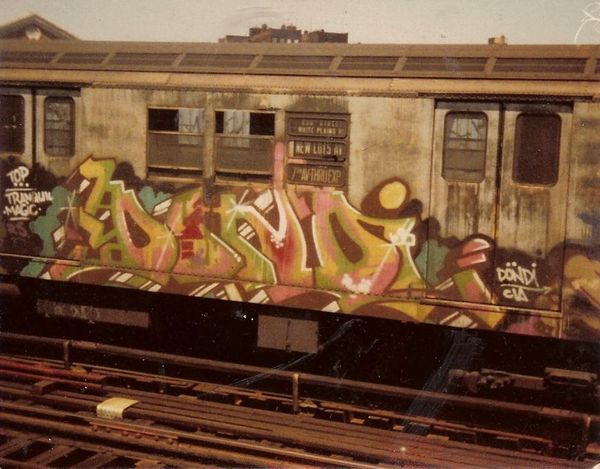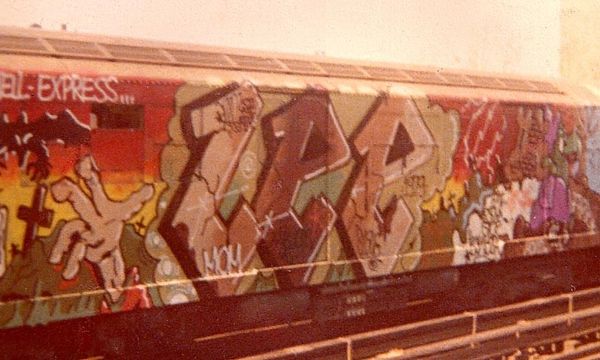
Dimensions: image/sheet (top): 6.99 × 31.75 cm (2 3/4 × 12 1/2 in.) image/sheet (bottom): 9.53 × 28.26 cm (3 3/4 × 11 1/8 in.) mount: 34.29 × 46.99 cm (13 1/2 × 18 1/2 in.)
Copyright: National Gallery of Art: CC0 1.0
Curator: Look at this dynamic diptych, “Seven-Up / Maurice,” a photograph taken by Henry Chalfant in 1977. It captures the energy of New York City subway cars covered in graffiti. What strikes you immediately? Editor: The boldness, definitely the boldness. These immense, almost cartoonish bubble letters practically vibrate off the surface. There's a visual punch; they seem less like words and more like symbolic markers of territory and identity. Curator: That’s a perceptive point. In terms of historical context, we have to understand this as more than mere vandalism. It was a form of resistance, a counter-narrative etched onto the city's steel veins. The anonymity offered by public space allowed marginalized voices—predominantly young people of color—to inscribe their existence and reclaim their narratives. Editor: Absolutely. Consider the choice of imagery: those bold letters, tags, and cryptic symbols act like emblems, conveying complex narratives about power, belonging, and self-expression. The repeated act of writing, of claiming space through image, is so fundamental to human psychology—think of cave paintings—only now transported onto a very different type of canvas. Curator: Precisely, and thinking intersectionally, this was happening against a backdrop of economic decline, urban decay, and social unrest. Graffiti became a visual manifestation of those tensions, a way to assert agency within systems that often denied it. Who were these artists? What struggles were they facing? This photo asks us to reckon with those questions. Editor: It’s an interesting commentary on ephemeral art. The graffiti exists momentarily before being washed off or painted over. This photograph acts as a preservation, enshrining those transient visual signifiers. These names and words and images now become timeless and enduring. Curator: A perfect illustration of how photography can grant permanence. We're left pondering the broader cultural significance—a collision of artistic expression, social commentary, and the reclaiming of public space. Editor: And an incredible look at the ways our cultures continue to record themselves symbolically through iconic turns of phrase and color.
Comments
No comments
Be the first to comment and join the conversation on the ultimate creative platform.
